The Haunting, director Robert Wise’s 1963 adaptation of Shirley Jackson’s novel, is arguably my favourite film, one I’ve watched numerous times and one I always seem to get something new out of, but it was a long time until I read the source novel. A few years ago saw the release of Mike Flanagan’s The Haunting of Hill House tv miniseries on Netflix. In the past nine months I’ve re-watched both the film and the tv series, and I’ve also reread Jackson’s novel, so it seemed a good time to examine all three.
This will be a fairly deep dive, so I will go into spoilerific detail. If you haven’t read/seen any of these and you’re worried about finding out how they end, maybe look away now, but if you’re a fan, or maybe if you don’t mind spoilers, why not take a trip with me to Hill House, which has stood for eighty years, and might stand for eighty more…
The Novel. The Haunting of Hill House, by Shirley Jackson (1959)

Given its reputation as a true classic of literature, it is perhaps surprising that I’m not as enamoured of the source novel as many are. In part I think it’s the fact that I came to the party late, as it were, reading the book many years (and many repeat viewings) after seeing the film, which means there’s a lot that’s fixed in my mind, my image of the central characters for one. There’s also Jackson’s prose, which is at times superb and at others a little cold. The book isn’t that old yet feels a trifle old fashioned. That said you can’t argue with that opening paragraph:
“No live organism can continue for long to exist sanely under conditions of absolute reality; even larks and katydids are supposed, by some, to dream. Hill House, not sane, stood by itself against the hills, holding darkness within; it had stood so for eighty years and might stand for eighty more. Within, walls continued upright, bricks met neatly, floors were firm, and doors were sensibly shut; silence lay steadily against the wood and stone of Hill House, and whatever walked there, walked alone.”
Just reading that last line makes me shudder.
The original story is slightly different than the film that followed. There’s no Dr Markway, distinguished and handsome potential love interest here, Dr Montague is a different figure altogether, only ever paternal, and Nell has no eyes for him, only for Luke but otherwise the dynamic fans of the film are familiar with is the same. Four intrepid investigators. The academic, the rich layabout, the bohemian extrovert and the guilt-ridden introvert.
The other big difference is that Jackson’s tale sprawls beyond the house, and many of the spookier elements take place outside. In particular Nell and Theo coming across a (clearly ghostly) family picnic is shudderingly written, most particularly because Jackson never tells us what is so wrong with it that prompts the pair to run, and for Theo to tell Nell not to look back. Later still Nell walks into the undergrowth believing Theo and Luke are following, only they aren’t… Brrr!!!
It seems likely there is a ghostly presence at Hill House in the novel. It isn’t impossible that it’s all Eleanor’s doing, her grief and guilt magnifying her psychic powers but I think even Jackson made it clear there’s something spooky afoot. The sense of dread regarding Nell as the book progresses has a horrible inevitability about it as well.
The one misstep I think, is the arrival of Mrs Montague and her curious companion. She’s too broad and overbearing and their inclusion does feel a bit jarring.
One can’t quibble with the story, and some truly wonderful prose however, and if it wasn’t for the novel, we wouldn’t have got…
The Film. The Haunting, directed by Robert Wise (1963)

It’s sometimes incredible to consider just how eclectic Wise’s career was. He directed everything, from musicals (West Side Story, The Sound of Music) to science fiction (The Day the Earth Stood Still, The Andromeda Strain, Star Trek the Motion Picture) as well as Westerns, war movies, thrillers and of course horror (The Curse of the Cat People, The Haunting.) He directed his first film in 1944 and his last in 2000. Some have called him a journeyman, but I think that’s unfair, and The Haunting just shows how good he was. A technically perfect film featuring four wonderful performances and inventive camerawork to instil fear without ever really showing us anything.
Ostensibly it follows the beats of the novel, with a group of four intrepid researchers travelling to Hill House, although there are some changes. Dr Montague is replaced by Dr Markway, and it’s Markway rather than Luke who provides us with Nell’s unobtainable love interest, and while Mrs Markway does show up, she isn’t remotely as annoying, and doesn’t come complete with her own sidekick in this version.
Perhaps the biggest change is that Wise dispenses with the garden scenes, and whilst a few scenes take place outside—most notably the finale—for the most part he eschews the grounds in favour of bottling his characters up inside of Hill House. This is a great stylistic choice, emphasising the claustrophobia of the story, implying our heroes have been swallowed whole by the vile house that Hugh Crain built, and suggesting there’s no escape.

The choice to film in black and white is another masterstroke. The sets are superb, with an oppressive rococo style and claustrophobic feel. The statues and the library are wonderful. Wise utilised a revolutionary amorphic camera that was so new he had to sign an understanding that the lens was imperfect. Wise and his cinematographer keep the camera moving and utilise crazy angles, skewed shots and weird lenses—as well as utilising mirrors— to give the impression of an insane house that’s always watching, always waiting.
And of course, perhaps the best decision Wise made was to rely on unseen terrors, with the exception of curious shadows (the face in the grill) and of course the breathing door. There are sounds as well of course, the banging, and the ghostly voices of Hugh Crain and the distressed children, but for the most part he relied upon his actor’s reactions to the house, the most famous of course being Nell’s “But whose hand was I holding?”
Which brings us onto the actors. Setting aside Lois Maxwell (yes Moneypenny!) as Mrs Markway and Valentine Dyall and Rosalie Crutchley as the wonderfully creepy Mr and Mrs Dudley, and a few other minor players, this film revolves around the four leads who play off one another perfectly.
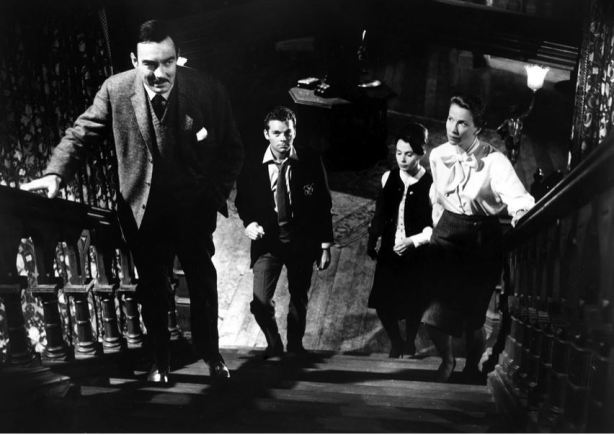
As Nell, Julie Harris is superb (why wasn’t she Oscar nominated?) fragile and frequently on the edge of hysteria, she’s a jittery mess of anxieties and guilt, a child in the body of a grown woman. With every tic and tremor Harris speaks volumes. By all accounts she was suffering with depression during filming, and isolated herself from the others further enhancing the character’s disconnection. She’s a pitiful, utterly empathetic character and you can’t help but feel for her.
As Theo, Claire Bloom is the polar opposite of Nell, experienced, confident and quite patently gay, even if it’s never explicitly stated, and her relationship with Nell is incredibly complex. At times friends, at times almost sisters, at times perhaps something more, is she interested in Nell? Theo clearly cares about Nell, yet can’t help sniping at her. It’s Theo after all who suggests Eleanor might be the one who wrote her name on the wall, and her throwaway “like sisters” line is heavy with meaning given we know how fractious Nell’s relationship with her own sister is. In weaker hands the relationship could have been flat and predictable, yet instead it’s vibrant, testament to Bloom and Harris’ acting. All the more amazing since they didn’t speak during the filming (though reconciled later).
As Markway Richard Johnson is cool, calm and collected, and quite debonair (in a slightly stuffy academic kinda way). Of the four his performance is the one that feels a little false at times, especially in the tenser segments, a little more theatrical should we say. I’m being harsh, because he’s still very good and as with the others it’s hard to imagine anyone else in the role.
Finally we have former child star Russ Tamblyn as Luke. Young , hip and flippant it’s a performance that could have gone over the edge but Tamblyn carries it off perfectly , and in many ways he’s the reason the film works, going to sceptic to believer over the course of the story. He’s the one after all who at the end says the house should be burned down and the ground sown with salt. He’s wonderful in this, playing off each of the others perfectly. And of course this won’t be the last time Tamblyn crosses paths with Hill House….

A superb film, a textbook example of creating tension without resorting to special effects. Claustrophobic and, pardon the pun, haunting, with wonderful characters at its heart, and that’s perhaps one of the main reasons it succeeds. Even if nothing supernatural happened at Hill House, you’d still enjoy watching these four characters interact. Or maybe that’s just me. I’ve watched this so many times they almost feel like old friends, and Nell’s death still hurts every time.
Anyway, let’s shift forward fifty odd—very odd—years to…
The TV series. The Haunting of Hill House, created and directed by Mike Flanagan (2018)

The arrival onto the scene of streaming platforms like Netflix and Amazon Prime has seen a whole slew of new TV shows, and when it was announced that a 10 part series based on Jackson’s novel was in the works I was concerned, mainly off the back of the truly atrocious 1999 remake of The Haunting, an exemplar for how not to remake a classic that misunderstood everything about the story and which wastes a decent cast by surrounding them with terrible CGI, overexaggerating the plot, and by having Catherine Zeta-Jones play Theo with all the subtlety of a punch to the face. I saw it once at the cinema and I never plan to see it again.
But enough about 1999’s exercise in how not to make a Hill House story, let’s talk about 2018’s exercise in how to do things properly, because Flanagan’s series is really top drawer storytelling, pretty much every episode scared me at some point and at least two of them are stone cold classics. Sure, it all kinda falls apart at the end but I can forgive it because the journey getting there is So. Damn. Good.
It’d be wrong to say there’s no nuance in the story, but from the perspective of the supernatural it’s clearly real. There isn’t even the hint that what’s going on is in characters’ heads. And we see most of the horror full on, albeit this is done far more effectively than the 1999 film managed. Flanagan also takes liberties, lifting pieces of the story and rearranging them, or in many cases rewriting them completely, and yet the essence of the story and the more familiar characters remain.
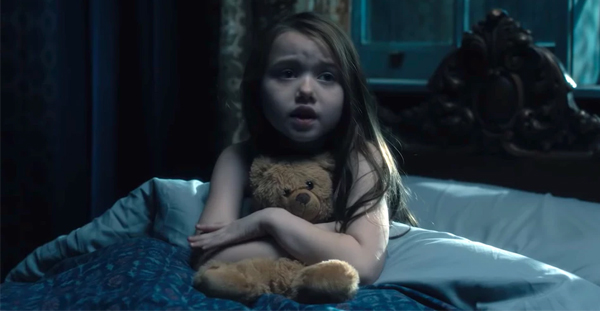
The story is set in two timeframes. 1992 and 2018, with different actors playing child and adult versions of the Crain children, and in fact Hugh Crain himself. Back in 1992 the Crain family were renovating Hill House, until tragedy struck, a tragedy that left questions over what, exactly happened there, and a tragedy that’s informed each character’s life since. The eldest son Steven (Michael Huisman in the present day) used a fictional account of what happened to springboard his writing career, and now makes a living writing true ghost books. Shirley (Elizabeth Reaser) is ostensibly the most together of the Crain children, and she runs a mortuary. Living rent free in a guest house on her property is Theo (Kate Siegel) who works as a child psychologist. A sensitive, she wears gloves most of the time to keep her curse at bay, and has distanced herself from any emotional attachments.
This leaves the youngest, and perhaps most damaged Crain children. Twins Luke (Oliver Jackson-Cohen) a man with a history of substance abuse, and Nell (Victoria Pedretti) haunted by sleep paralysis and recurring imagines of a particularly terrifying spectre.
There’s Henry Thomas and Timothy Hutton as the past and present versions of Hugh, and Carla Gugino as Olivia, the children’s mother.
Like all the best horror Flanagan’s tale is about something beyond scaring people. This isn’t some soulless fairground attraction, it’s a tale of guilt and loss and redemption, and above all else love and family. Even if there weren’t a possessed house involved, it’d be interesting due to the writing, the direction and the cast.
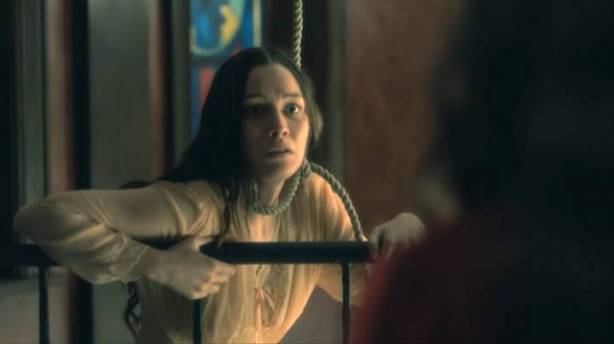
The Crain children think they’ve moved on with their lives, but the death of one of them will prove that, in many ways, they never left Hill House. The interweaving of timelines is exquisitely done, and not only between 1992 and 2018, even within the distinct timelines the story shifts back and forth as we see the same event from different characters’ perspectives.
In terms of frights there are some fantastic jump scares (a couple in particular had me literally screaming, even second time around when I knew they were coming) but beyond this there’s a palpable sense of dread, and many of the scares take their time, tension building as you wait for what you know is coming—take little Luke hiding under his bed as footsteps approach!!
By all accounts there are dozens of spectres in some scenes, hidden away in the shadows, though even on a second viewing I only spotted a couple of them. Two of the ghosts at the forefront are the most effective however. The tall man who menaces Luke (and there’s a Luke centric episode in the present that I’m sure Flanagan loaded with really tall extras so the ghost is subconsciously always on our minds) and the Bent Neck Lady who terrified Nell both as a child and an adult.
Which brings me to those two episodes. Episode 5 is named the Bent Neck Lady, a Nell focused episode that shows the full nightmare she experiences as she’s haunted by the titular phantom. It starts out utterly terrifying, but eventually morphs into something utterly heart-breaking. If you thought Nell’s fate in the book and the film were tragic you ain’t seen nothing yet, and by the end I was in pieces. One of the best episodes of television ever, in my not so humble opinion, and for a ghost story something that plays with time better than 99% of actual time travel sci-fi.
And then we get episode 6. Two Storms. A story that alternates between two thunderstorms, one in 1992 which the Crain family experienced in Hill House, the other in 2018 the night before Nell’s funeral as the family reconvene in the funeral home to talk about their sister, and old wounds will be reopened. The 1992 stuff is eerie, especially when one of the children goes missing, but it’s in the present day that the episode excels. The direction and cinematography, the script and the actors all combine to create (pardon the pun) a perfect storm of grief and anger captured in fluid tracking shots that show us spectres the family can’t see, and intercut between 2018 and 1992 seamlessly. It’s a heartrending episode where every single character’s wounds are raw. Again, strip out the horror and it’d still work.

There are so many other things I could mention; the return of Russ Tamblyn in a cameo as Nell’s psychiatrist, the cup of stars (missing from the film), Luke’s imaginary friend who it turns out is anything but ghostly, the character names (Shirley for Shirley Jackson, Steven for King etc), the secret of the red room that’s been staring us in the face the whole time, the clock repairman, Mr Smiley Face, the elevation of the Dudley’s beyond just creepy two dimensional plot points…and of course the fact that the five Crain siblings represent the stages of grief: Steve is denial, Shirley is anger, Theo is bargaining, Luke is depression, and Nell is acceptance.
Nothing is ever perfect, and maybe it could have been an episode or two shorter, and maybe it does all wrap up a little too neatly in the end, and yes, Oliva as the crazy woman who wants to kill her kids in order to save them isn’t a great trope, but any flaws are minor, and if a second viewing taught me one thing, it’s this, much like the film, The Haunting of Hill House is a series I will return to again and again because I think there’ll always be something new to take from the story, and much as with The Haunting these are characters I enjoy spending time with, and I’m really looking forward to seeing what Flanagan does with The Haunting of Bly Manor, based on The Turn of the Screw.

In the final analysis this is a tale that’s stood the test of time for over sixty years, and might stand for sixty more, testament to the strength of Jackson’s original story. It’s been remade and reimagined, and even survived Jan de Bont and Liam Neeson! Nobody’s tearing this story down and sowing the ground with salt in a hurry!

 By
By 


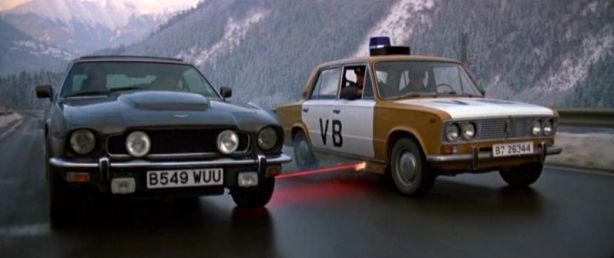
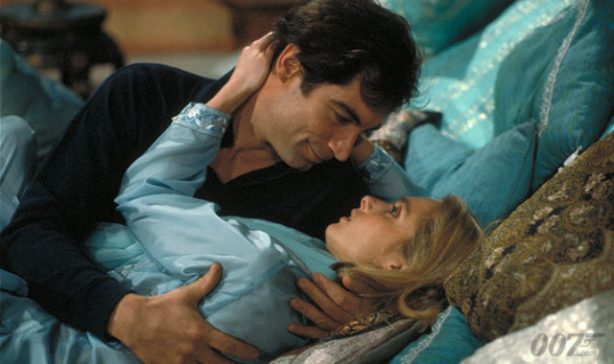



 By Adrian Tchaikovsky
By Adrian Tchaikovsky








